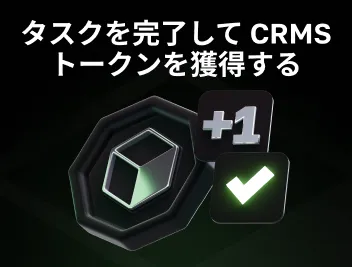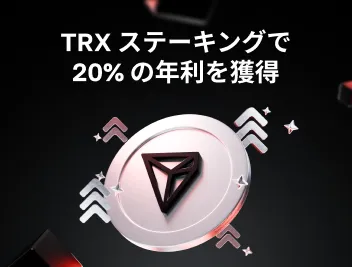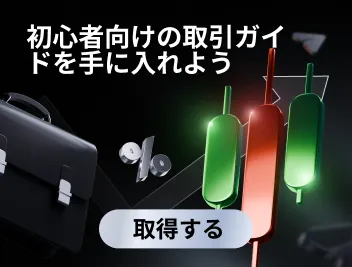
ビットコイン取引初心者向けガイド: 基本事項、種類、戦略
ビットコインは最初に登場した暗号通貨であり、最も人気のあるデジタル資産です。2009年の登場以来、価格は活発に成長しており、魅力的な投資対象となっています。BTCは資本を増やすためにトレーダーによって積極的に使用されています。これらのプロセスをさらに理解するために、この記事ではビットコイン取引に関する追加情報、主要戦略、種類、および成功するための始め方のアルゴリズムについて説明します。
BTC取引とは何か、どのように機能するのか
BTC取引とは、このデジタル通貨を様々なタイミングで購入および販売することです。価格の変動を監視し、その差額で利益を得ることができるため、価格の変動を追跡します。そのため、コインの市場価値が高い時に売却し、低い時に購入するのが有利です。
ビットコイン取引は暗号通貨取引所で行われ、週末を含む週7日間開かれています。トレーダーは、市場注文や制限注文など、様々な注文を使用して取引に参加します。制限注文は、資産が事前に設定された価格で購入または販売されることを意味し、市場注文は現在の価格で行われます。トレーダーは最適な取引終了のタイミングを選ぶためにビットコイン市場の状態を分析します。
ビットコイン取引の戦略
トレーダーがコインを売買するために使用する方法は、BTC取引戦略として知られています。これらは様々な市場条件やトレーダーの好みに基づいて実施され、リスクレベルも異なります。日中取引、スイング取引、ドルコスト平均法(DCA)、HODLing、ブレイクアウト取引がその一例です。以下でそれぞれ詳しく見ていきましょう。
日中取引
日中にBTCを売買することが、日中取引戦略の主な特徴です。この方法は、短期間の価格変動から利益を得ることに基づいており、同時に夜間に発生する可能性のある突然の変化によるリスクを回避します。日中取引は市場の綿密な監視が必要であるため、トレーダーはチャートやRSIなどの指標を使用して予測します。
スイング取引
スイング取引は、数日または数週間にわたってBTCコインを保有する方法です。トレーダーは中期的な価格変動から利益を得ます。この方法は、BTCの価格変動から利益を得たいが、市場を継続的に監視する時間やリソースが不足している投資家に適しています。
HODLing
BTCコインを長期保有する戦略は、HODLingとして知られています。この方法は、積極的な取引を最小限に抑え、日々や週ごとの価格変動を無視し、長期的な利益に重点を置きます。この戦略の支持者は、ビットコインを高く評価しており、ネットワークの成長に伴って価値が増加すると期待しています。
ドルコスト平均法(DCA)
ビットコインの市場価格に関係なく、ドルコスト平均法の戦略は、定期的に一定の金額を暗号通貨に投資することを伴います。例えば、毎月1,000ドルをビットコインに投資することができます。この方法を使用することで、コインの価値を平均化し、価格の変動を回避できます。価格が低い時にはより多くのBTCを購入し、価格が高い時には少なく購入します。市場の変動リスクを回避しながらBTCで利益を得たいトレーダーにとって、DCAは最適な選択です。
ブレイクアウト取引
ブレイクアウト取引は、ビットコインの価格が抵抗(最高価格)および支持(最安価格)ポイントを超えたときに発生します。例えば、ビットコインの価格が数週間にわたって60,000ドル以下または65,000ドル以上で取引されていた場合、「ブレイクアウトの状況」が発生します。トレーダーは、これらの時期にBTCを購入または売却し、突然の価格変動から利益を得ようとします。

ビットコイン取引の種類
ビットコイン取引の種類は、戦略とは異なり、デジタル資産の売買の詳細に焦点を当てています。例えば、あるトレーダーはBTCを長期投資として保有しますが、他のトレーダーはできるだけ早く利益を上げることを好みます。これらの種類について詳しく見てみましょう。
スポット取引
スポット取引は、現在のレートでビットコインを即座に購入および販売し、その場で利益を得る方法です。これは短期取引とも呼ばれます。取引が完了すると直接BTCを購入し、暗号通貨の所有者となります。その後、資産を保有、売却、または引き出すなど、自由に処理できます。BinanceやCoinbaseのような暗号通貨取引所では、スポット取引が利用可能です。
Cryptomusのようなプラットフォームを見逃さないでください。ここには100以上の取引ペアがあり、その中でBTCがリーダーとなっているので、このコインで取引を行うことが保証されています。さらに、リアルタイムのコイン追跡オプションと取引計画用のチャートがあり、売買プロセスをより正確にします。そして、手数料がほぼゼロという低さで、取引は確実に利益をもたらすでしょう。
マージン/レバレッジ取引
このマージン取引はレバレッジを使用します。ビットコインで取引を行うために、取引所からお金を借りることを前提としています。最小限の初期資本でこの方法を使用すると、より多くのBTCを制御できます。
例えば、ビットコインが65,000ドルの時、20,000ドルしか持っていない場合でも、5倍のレバレッジを利用して100,000ドル相当のBTCを購入できます。5倍のレバレッジのおかげで、コインの市場価格が4%上昇するだけで、最初の投資額に対して20%の利益が得られます。しかし、価格が下落すると、強制清算され資金を失う可能性があります。このため、リスクを予測できる経験豊富なトレーダーのみが、通常マージン取引を選びます。BinanceやBybitなどの取引所は、この機会を提供しています。
先物取引
先物取引の場合、投資家は特定の日に一定の価格でBTCを購入または売却する契約を締結します。取引者が約定された価格で購入し、指定された日にコインの市場価値が以前より高ければ、取引は利益をもたらします。しかし、BTCの価格が下がると損失が発生します。
また、市場動向を理解しているトレーダーは、先物取引を選ぶ傾向があります。彼らはFTX、Binance、Bybitのような暗号通貨取引所を利用できます。
オプション取引
先物取引と似たようなオプション取引では、指定された未来の日にBTCを購入または売却します。しかし、オプション取引では、選択した日よりも早く取引を終了することができます。例えば、暗号通貨の価値が上昇または下落すると予測される場合に、トレーダーがオプションを使用する必要が生じることがあります。OKXやMEXCなどの取引所は、オプション取引の機能を提供しています。
空売り
ビットコインの価格が下落する場合、空売りを使用して利益を得ることができます。トレーダーはブローカー(暗号通貨取引所)からBTCを借りて、現在の市場価格で販売します。その後、借りたコインを安い価格で再購入し、ブローカーに返却して、差額を利益として得ます。しかし、空売りはBTCの価格が上昇する場合に損失をもたらすリスクがあります。この取引方法は、BinanceやBybitなどの取引所で実装できます。
裁定取引
ビットコイン取引において、裁定取引とは、さまざまな取引所間でコインの価格差を利用して利益を得ることを指します。したがって、トレーダーはあるプラットフォームでBTCを安く購入し、別のプラットフォームで高く売却します。この取引方法にはリスクが少ないものの、価格差はすぐに消えるため迅速に行動する必要があります。この取引オプションを使用する場合は、CryptomusやKrakenのように使いやすいインターフェースを持つ取引所を選ぶべきです。
自動取引(ボット)
ビットコインの自動取引ボットは、事前に設定された戦略と市場の状態に従って自動的に取引を実行するソフトウェアを使用します。手動方式とは異なり、ボットは市場データを継続的に監視するため、より速く正確な意思決定を行います。ボットを適切に使用するには、最適な行動方針を選択し、技術的な専門知識を持っている必要があります。このツールの実装はCryptohopperやPionexサービスによってサポートされています。
ビットコイン取引の始め方
ここでは、暗号通貨取引所でビットコイン取引がどのように行われるかについて、さらに詳しく説明します。使用する戦略に関係なく、手順はすべてのプラットフォームで同じです。次はステップバイステップのアルゴリズムです。
-
ステップ1: 取引の種類と戦略を選択する。 上記でリストした方法の中から、最も適したビットコイン取引方法とアプローチを選びます。
-
ステップ2:暗号交換を選択。 どのプラットフォームでビットコインを取引するかを決めます。選んだ取引方法が取引所で利用できるオプションであることを確認してください。取引所はまた、広範な利用者基盤を持ち、強力なセキュリティ対策を提供している必要があります。例えば、トレーダーはCryptomus取引所で安心してスポット戦略を使用できます。これはAMLと2FAを使用してユーザーデータと資金を保護しています。サイトのセキュリティポリシーを学び、他のユーザーのレビューを読んで、プラットフォームが信頼できるか確認してください。
-
ステップ3: アカウントを作成する。 選択したプラットフォームで名前とメールアドレスを入力して登録します。KYC手続きを完了してください。運転免許証またはパスポートを準備し、身分証明のためのセルフィーを撮る準備をしてください。
-
ステップ4: アカウントに資金を入金する。 暗号通貨または法定通貨を使って取引所アカウントに資金を入金します。一部の取引所では、クレジットカードやデビットカードをリンクして取引を行うことができます。
-
ステップ5:取引ペアを選択。 次に、購入予定のBTCの量と入金した通貨が一致することを確認します。例えば、1トークン95,000ドルでBTCを購入したい場合、その金額と同等のUSDTまたはUSDCを持っている必要があります。その後、必要な取引ペアは「BTC/USDT」または「BTC/USDC」となります。プラットフォームで利用可能な他のペアを取引することもできますが、安定したコインが最も多く取引されているため、流動性が高いです。
-
ステップ6: 取引を行う。 選択した取引戦略に従って進めます。必要なページに移動し、必要な情報(市場注文または制限注文など)を入力し、取引を確認します。これで、取引を監視および管理できます。
BTC取引で最大の利益を得るためのヒント
ビットコイン取引では、リスクを減らし、利益を最大化するために慎重な戦略を使用する必要があります。いくつかの提案を以下にまとめました。
-
信頼できる暗号通貨取引所を選びましょう。 ビットコイン取引には多額の資金が関わるため、BTCが保護されるプラットフォームで取引を行いましょう。手数料や取引所でのコイン価値も、最終的な収入に影響を与える可能性があるため考慮する必要があります。
-
市場を注視する。 ビットコインおよび市場全般に関するニュースを読み、暗号通貨分野の最新情報を入手しましょう。コインの価格の方向性を判断するために、市場動向を考慮しましょう。
-
技術的な分析を使用する。 ビットコインの価格チャートや技術指標を解釈するために必要なスキルを習得しましょう。これにより、市場パターンを認識することができます。
-
リスクを管理する。 ビットコインの価格が大幅に下落する場合があるため、失ってもよいお金でのみ取引を行いましょう。資産をボラティリティから保護するために、多額の借入金を使用しないようにしましょう。
これらのガイドラインに従い、ビットコインを安全に取引し、利益を上げてください。トレーダーとして経験を積むにつれて、暗号通貨市場がどれほど予測不可能であるかを常に覚えておくことが重要です。このようにして、ビットコイン取引の種類や戦略は、あなたに利益をもたらすだけのものとなるでしょう。
このガイドが役立つことを願っており、ビットコイン取引においてどの種類や戦略を使用するか自信を持って決定できることを願っています。このコインを取引した経験がありますか?以下のコメントで教えてください!
記事を評価








コメント
0
コメントを投稿するにはログインする必要があります